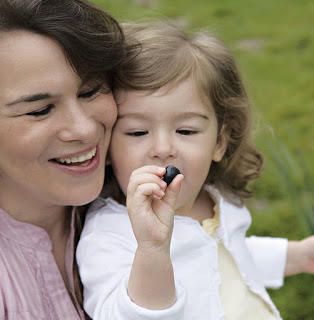
The relationship between two of today’s most destructive diseases may now be a little clearer. This month, The New York Times reported on the detection of an important link between cancer and diabetes, a correlation so strong it is being compared to the link between smoking and cancer.
The news that Type 2 diabetes patients have an increased risk of developing certain cancers comes from the American Cancer Society and American Diabetes Association and researchers and the National Cancer Institute. One in five cancer patients has diabetes, according to the Times report.
The implication that lowering cancer statistics may hinge on lowering the number of people with diabetes is revealing, but it’s also difficult to hear. That’s because the number of Type 2 diabetes diagnoses today is staggering, and many more cases go undiagnosed. If current trends continue, according to the Centers for Disease Control and Prevention, by 2050, 1 in 3 people in the U.S. will have Type 2 diabetes – a diagnosis that is already linked with a long list of health complications, companion diseases, and death.
While the Times report reveals an intriguing link between these two devastating diseases, in fact, we have already observed a connection between cancer and diabetes from a nutrition perspective. In an interview with Wild About Health this past summer, Dan Nadeau, Medical Director of the Diabetes and Endocrinology Associates of Maine’s York Hospital, explained that diabetes is not a disease that exists in a vacuum. Having diabetes means you are at increased risk of Alzheimer’s, cancer, heart and vascular disease, inflammation, accelerated aging, and many other complications, he said.
Potent, antioxidant-rich, inflammation-fighting foods that provide protective effects to the body are central to the discussion of prevention, according to experts like Nadeau. Because much of one’s risk of Type 2 diabetes depends on being overweight, he advocates for a change in diet built on daily, ongoing healthy choices in an effort to “quiet the storm” of rampant inflammation inside the bodies of those diagnosed with diabetes and the many at risk.
According to Nutrition Advisor to the Wild Blueberry Association Susan Davis, MS, RD, “The typical western diet, high in refined carbohydrates, fats, sugars and calories actually contributes to inflammation while a diet higher in fruits, vegetables, whole grains and omega 3 fatty acids is anti-inflammatory. Vitamins, minerals, as well as plant compounds have both antioxidant as well as anti-inflammatory properties.” For example, wild blueberries, most known for their high antioxidant capacity, contain flavonoids such as anthocyanins, flavonols, and proanthocyanidins that have been shown to protect us from disease caused by low-grade, chronic inflammation such as cancer and diabetes (not to mention heart disease and arthritis). And when the inflammatory storm is quieted, our risk for disease subsides as well.
Protection on Our Plate
 Coincidentally or not, a large portion of today’s research into berries and wild blueberries focuses on both cancer and diabetes prevention potential. We know, for example, that daily consumption of whole blueberries have helped people with a high risk for Type 2 diabetes reduce that risk by increasing the participants’ insulin sensitivity. And, a recent study from the Harvard School of Public Health showed that consumption of anthocyanin-rich fruits can reduce diabetes risk. We’ve also reported on the remarkable study conducted by Lynn Adams, Ph.D. and her team at Beckman Research Institute of City of Hope: they demonstrated the potential of blueberries to inhibit the growth of Triple Negative Breast Center (TNBC), a particularly aggressive and hard to treat form of breast cancer. We have even covered research that supports that wild plants provide protection from cancer.
Coincidentally or not, a large portion of today’s research into berries and wild blueberries focuses on both cancer and diabetes prevention potential. We know, for example, that daily consumption of whole blueberries have helped people with a high risk for Type 2 diabetes reduce that risk by increasing the participants’ insulin sensitivity. And, a recent study from the Harvard School of Public Health showed that consumption of anthocyanin-rich fruits can reduce diabetes risk. We’ve also reported on the remarkable study conducted by Lynn Adams, Ph.D. and her team at Beckman Research Institute of City of Hope: they demonstrated the potential of blueberries to inhibit the growth of Triple Negative Breast Center (TNBC), a particularly aggressive and hard to treat form of breast cancer. We have even covered research that supports that wild plants provide protection from cancer.
Davis has frequently shared with Wild About Health readers her view that we should view food as “treatment” for disease. Just as food can be used defensively as a preventative for disease and the effects of aging, it can be used as medicine to fight disease and counteract the damage done by free radicals that cause inflammation. Such advice is as timely as ever with Type 2 diabetes on the rise and its connection to certain cancers beginning to be established.
Making smart choices in the supermarket and at the breakfast, lunch, and dinner table means better health and lowered risk of challenging diseases like Type 2 diabetes. And when we make efforts toward prevention in important areas like diabetes, we are making efforts toward prevention in others as well.
You can find information about diabetes and diabetes prevention at Center for Disease Control & Prevention, the American Diabetes Association, and at the Mayo Clinic.

Read More About Nutrition, Diabetes & Cancer
Diabetes, Wild & “The Newsroom”
Pterostilbene: Big Promise for an Amazing Antioxidant
Dr. Oz’s “Cancer Detective” Makes a Case for Wild










